| Early Spring Date: | March 31 |
| Late Spring Date: | May 28 |
| Best Dates to See in Spring: | April 21 - May 21 |
Spring: Black-and-white Warblers are one of the most common warblers at Monticello Park. They start to arrive in mid-April and are seen in good numbers during the last week of April through the middle of May. Their breeding range includes much of the eastern half of the United States, and they prefer deciduous woods near water. They nest in the Washington metro area, but not at Monticello.
Fall: Black-and-white Warblers start to arrive at Monticello during August on their journey south. They pass through during September into early October.
Where to See Them in the Park
The Black-and-white Warbler is the only warbler species at Monticello who regularly forages by hopping along the branches and trunks of trees or on logs. Sometimes, Black-and-white Warblers will hop on a branch without seeming to care that people are nearby. They often go into the stream to drink and bathe.
Physical Description
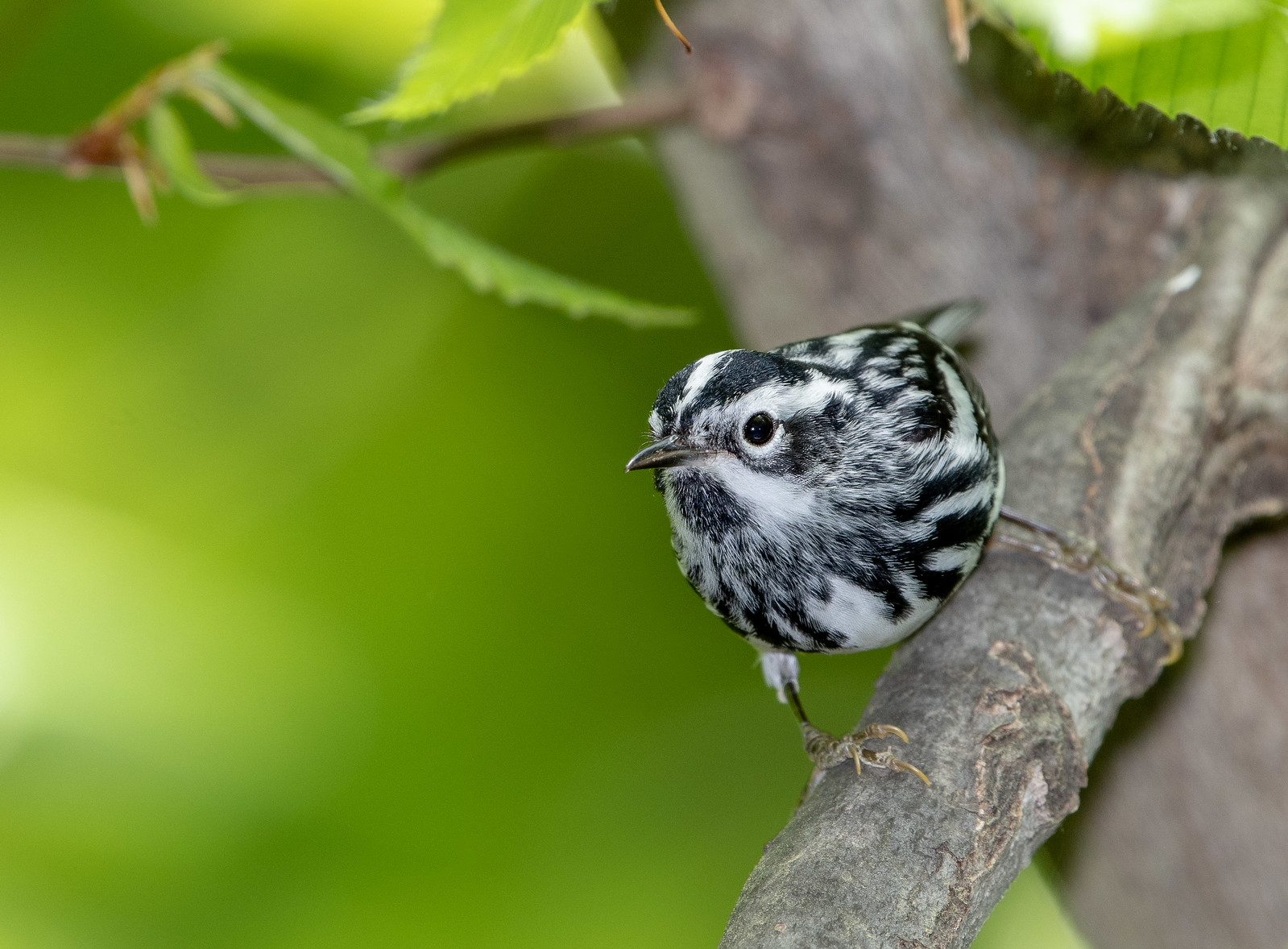
Black-and-white Warblers look like little escaped convicts as they hop along branches in their striped plumage. Their hind toe is longer than the hind toe of other warbler species, allowing them to move more easily when hopping on trees. They have thicker legs than other warbler species for the same reason.
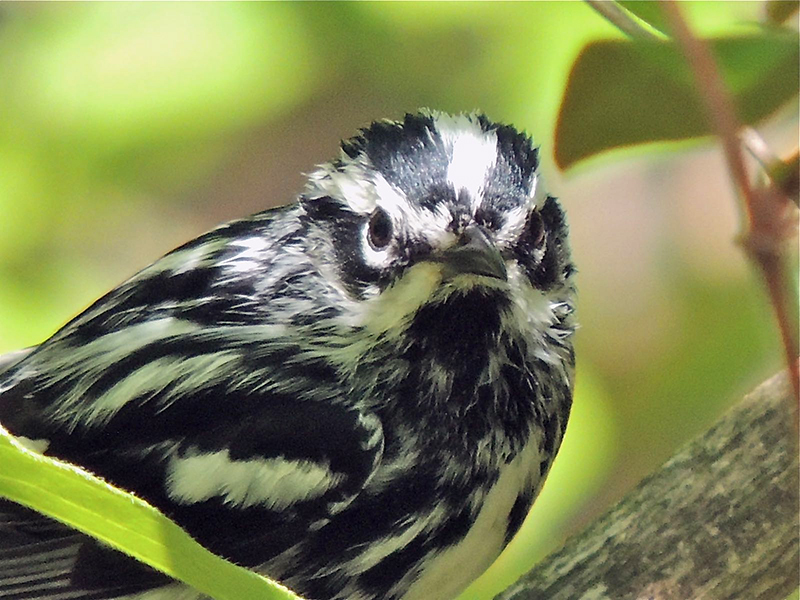
They have a pointed bill that curves slightly downward. The male has a black cheek.
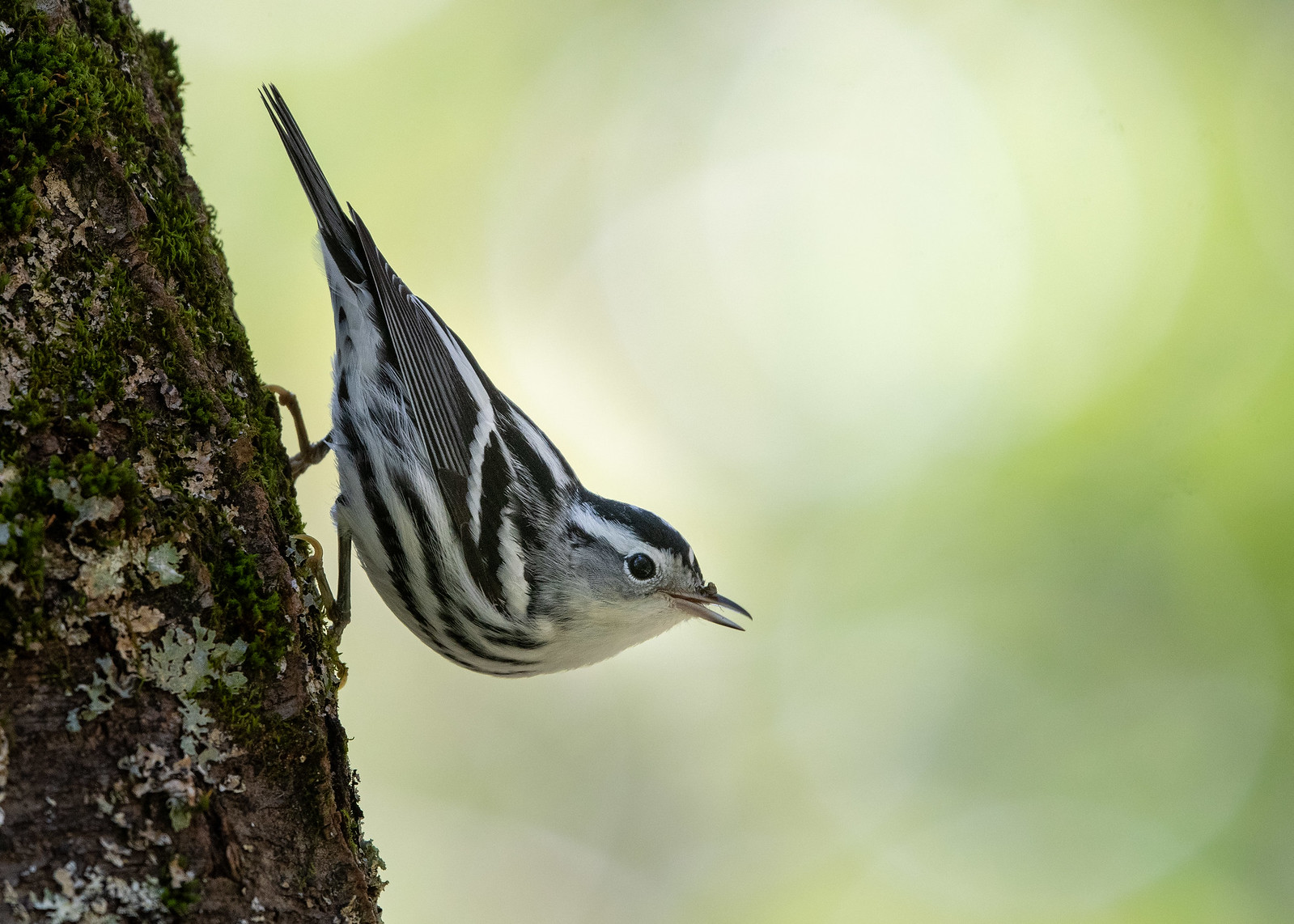
The female's cheek has a gray tinge, and she is not as heavily streaked below as the male.
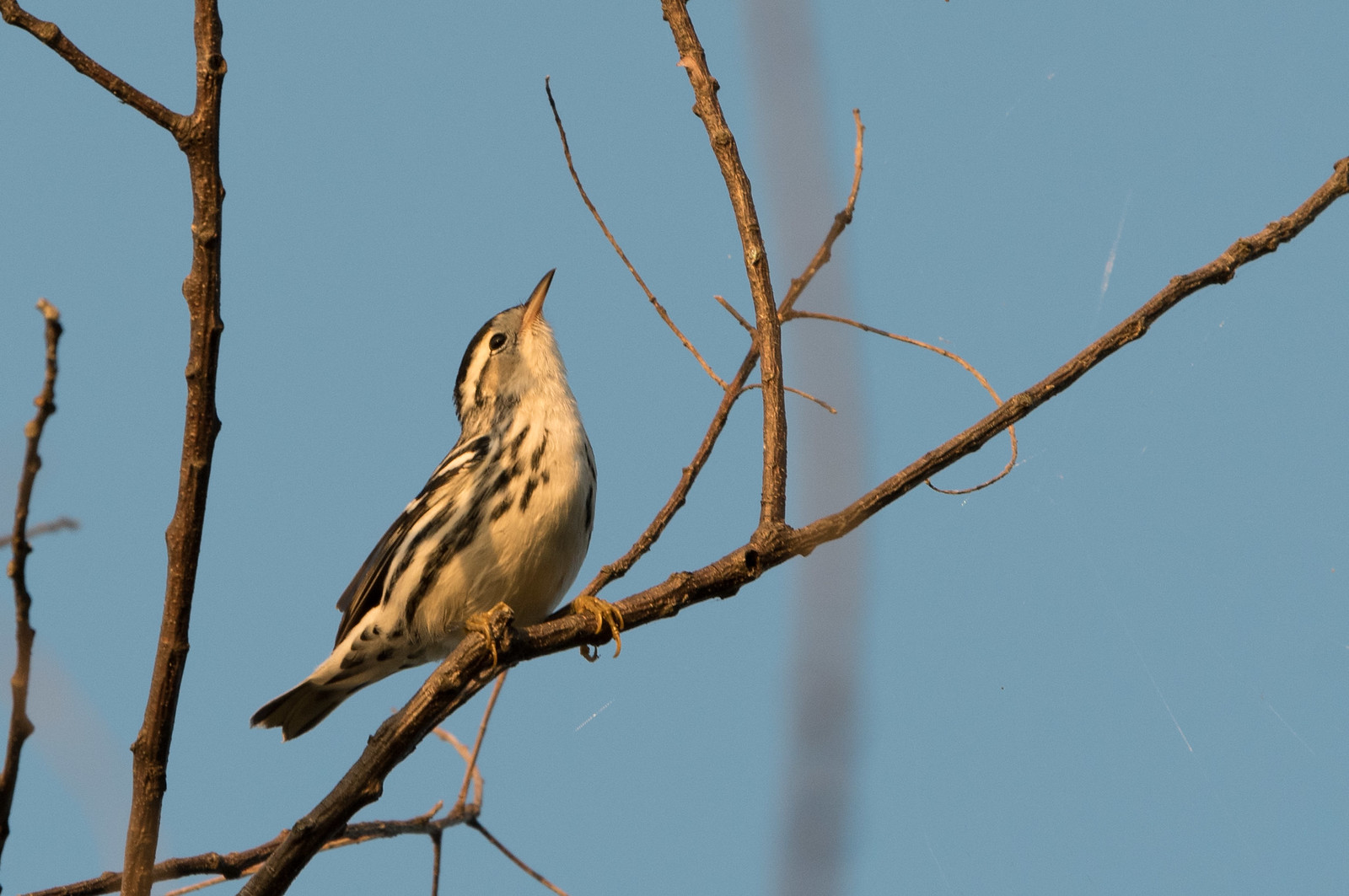
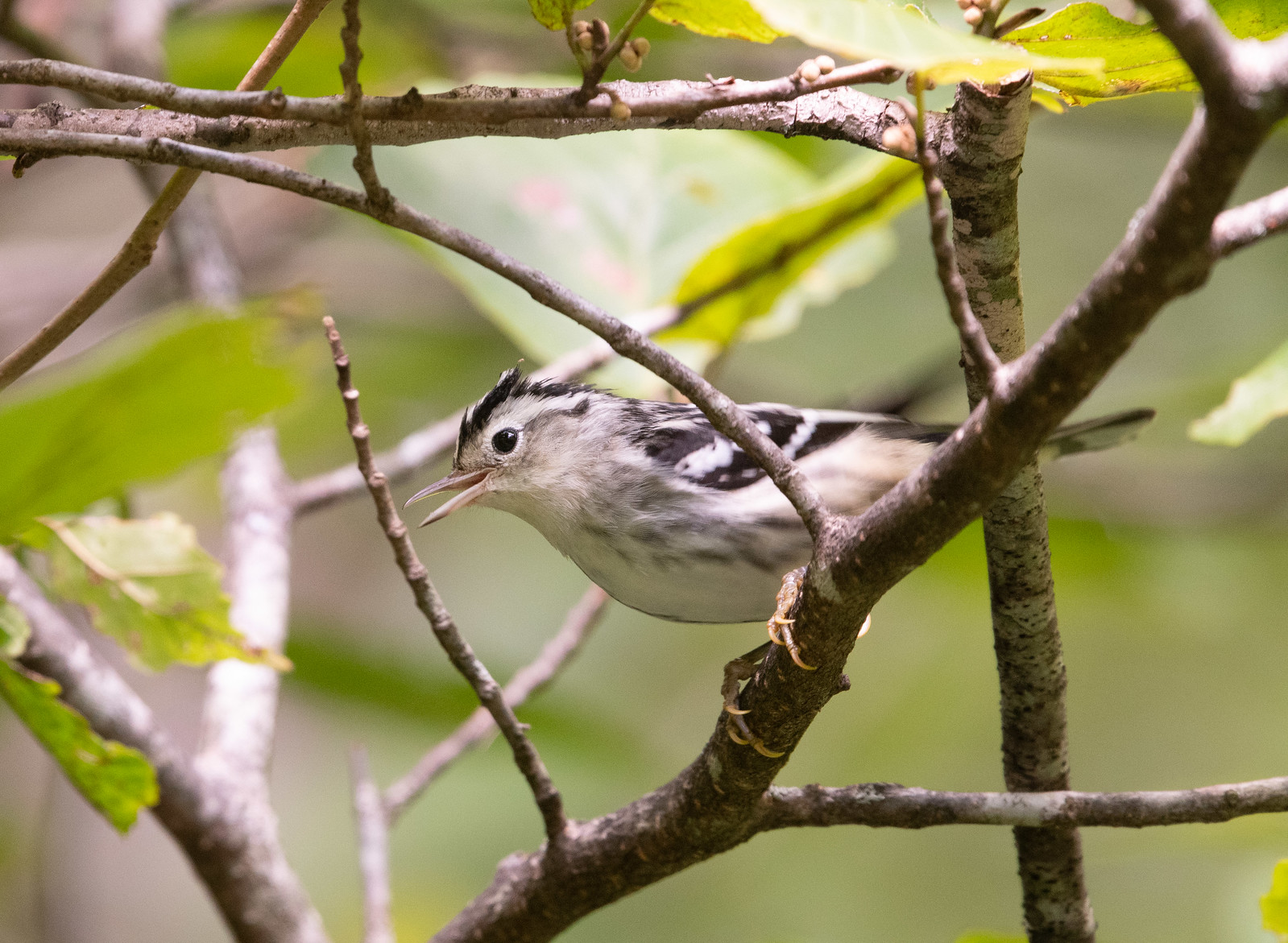
Fall: The plumage of fall adult males and females resembles their spring plumage. First-fall males resemble spring females, with flanks that are whitish rather than buffy. Fall first-year females have less streaking below than males, and they sometimes have a buffy wash below.
Vocalizations
The song of the Black-and-white Warbler resembles a squeaky wheel — wee-sa, wee-sa, wee-sa, wee-sa. It is similar to the high-pitched two-part song of the Bay-breasted Warbler, but is usually delivered from lower in the trees.
Hear the songs of the Black-and-white Warbler.
Notes
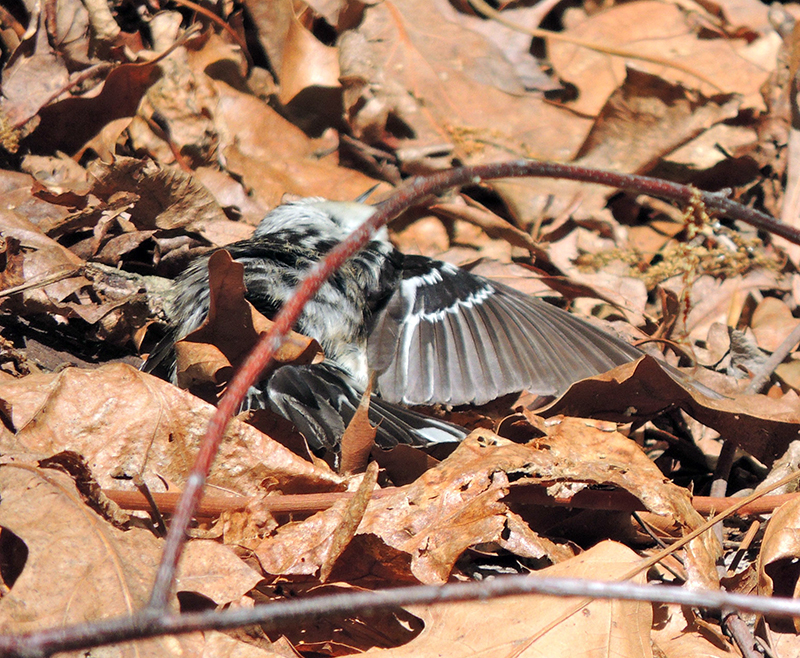
The Black-and-white Warbler above looks dead, but she was merely sunning herself in the middle of the day at Monticello. Sometimes, birds expose themselves to direct sunlight to try to kill parasites in their feathers. Most birds have no ill effects from feather parasites. In addition to sunning, birds also get rid of parasites by preening, dust bathing, and even rolling in ant swarms — it is thought that the parasites are killed by the formic acid released by the angry ants. More than 200 species of songbirds are known to engage in anting. Sometimes instead of ants, birds will use sumac berries, beetles, and even smoldering cigarette butts.
Origin of Names
Common Names: Black-and-white from the plumage. The New World Warblers were named for their similar appearance to European warblers, to whom they are not related. Most of the New World warblers do not warble (sing continuously with notes that change frequently).
Genus Name: Mniotilta means moss-plucking, from the way they forage along trees.
Species Name: Varia is Latin for varied, from the black-and-white plumage.
Black-and-white Warbler video footage
Return to the Index
